Shopping Cart
0 item(s) - Price: EnquireLatest News
Latest News from Food Tech Solutions
1st July 2016
NEW PRODUCT: Charm Peel Plate Microbial Tests
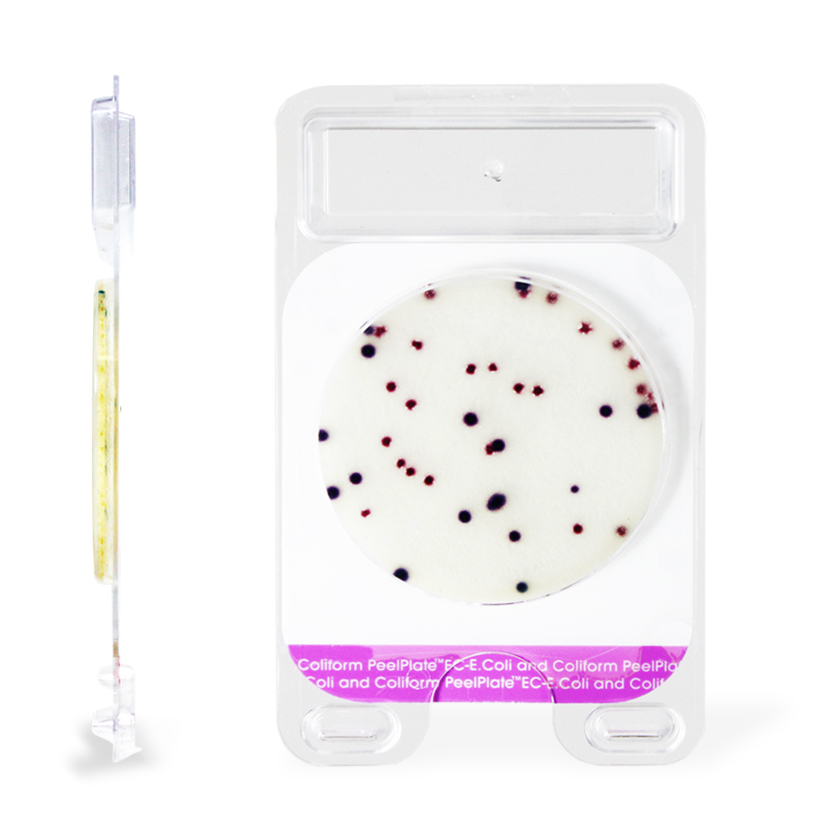 Charm Science have recently released the new microbial detection product: Peel Plate.
Charm Science have recently released the new microbial detection product: Peel Plate.
Peel Plate tests are a single use pre-prepared plate used for the specific detection of microorganisms in a product or sample. These ready-to-use plates come pre-prepared with self-wicking media requiring only the addition of a suitably diluted samples in order to test for the quality and control of you product. These plates have both AOAC R2 and FDA approvals and come in various forms for the detection of specific organisms.
The current range includes aerobic count, e.coli/coliform, coliform, yeast and mold, heterotroph and enterobacter. They also come in high-volume format for testing minute contaminations in large samplers.
From the Charm Website:
"Peel Plate bacterial tests are simplified culture methods for detecting micro-organisms. AOAC-RI has recently granted performance tested method status to Peel Plate EC and AC tests. Each version of these tests contains non-selective or selective medium and follows conventional microbiologic procedures for time and temperature of incubation. An air gap between the plate and cover allows colony picking and determination of microbial morphology. Currently there are Peel Plate tests for aerobic bacteria (Peel Plate AC) and coliforms/E. coli (Peel Plate EC) for use in dairy products, ground meats, other foods, contact surfaces and water. The tests are prepared media in a shallow dish with an adhesive top. Just add the sample to the middle and it wicks through the media and solidifies. Invert the test, stack multiple tests together (if appropriate) and incubate. The Peel Plate tests are intended for microbiological laboratories, but may also be used by food quality stakeholders such as farmers, milk processors, and water municipalities."
To find out more about Peel Plate or to request a demonstration or to set up a trial please contact the team at Food Tech Solutions today.
18th January 2016
NEW PRODUCT: Amyloglucosidase (Aspergillus niger) Glycerol Free E-AMGDFNG
High purity Amyloglucosidase (Aspergillus niger) for use in research, biochemical enzyme assays and in vitro diagnostic analysis.
EC 3.2.1.3
CAZy Family: GH15
CAS: 9032-08-0
glucan 1,4-alpha-glucosidase; 4-alpha-D-glucan glucohydrolase; glucoamylase
From Aspergillus niger.
In buffered solution.
This enzyme is recommended for use in Total Dietary Fibre analytical procedures and the Megazyme Total Starch test method. The preparation is free of glycerol so can be used in TDF procedures where glycerol is used as an internal standard (e.g. AOAC Method 2001.03/AACC Method 32-41.01; the Matsutani Method).
Specific activity: ~ 36 U/mg (40oC, pH 4.5 on soluble starch); ~ 400 U/mL on p-nitrophenyl β-maltoside; ~ 6,520 U/mL on soluble starch.
Stability: > 4 years 4oC
8th December 2015
In the Hospitality industry, food safety is important. Specifically, the safe handling of food and minimising opportunities for cross-contamination. Hand washing is an extremely effective way to dramatically cut the risk of contaminating food and beverage, yet it is often one of the most overlooked areas of food safety. Beacuse we can't see the microorganisms on our hands, it's easy to forget they're there and properly insure they don't contaminate our cutsomers' food. This is where visual training aids come in. GlitterBug gel and lotion both offer a powerful demonstation tool for training new and existing staff on the importance of proper hand washing technique. Find out more here.
15th October 2015
Volume measurement has all sorts of dynamic applications in the foods and materials industry. Whether it be relating the amount of raw material in a finished product, comparing sizes and shapes of different grades of fruit or vegetables or even prototyping packaging systems for food products there are a plethora of options available out there. The Stable Micro Systems Volscan is a compact benchtop laser 3D scanner that can accurately measure the volume and density of a product. Not only does it give 3D and 2D images, you are able to fine-tune the system to adjust the resolution to match the needs of your product. You are able to export and play with these images, as well as conduct detailed post-scan analytics on the images for both research and quality control purposes.
14th September 2015
PRODUCT SPOTLIGHT: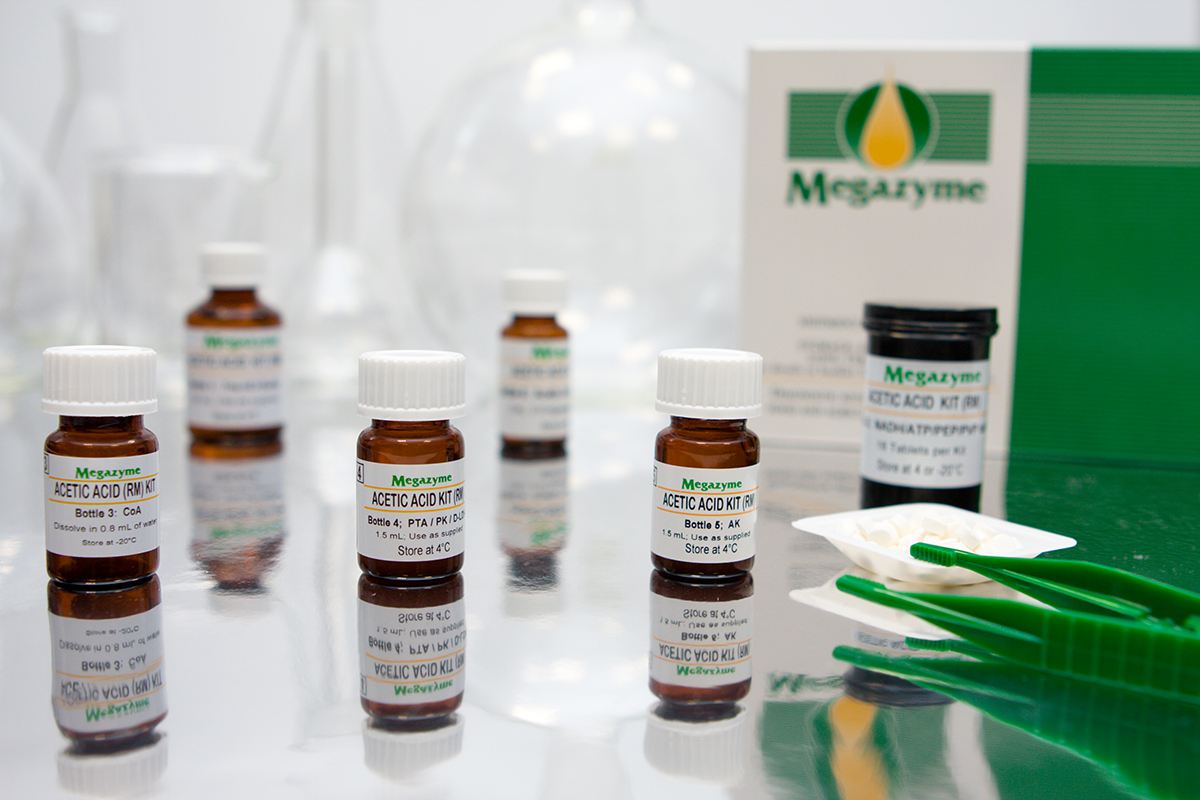
Ammonia Assay Kit
UV-method for the determination of Ammonia in foodstuffs, beverages and other materials
Principle:
2-Oxoglutarate + NADPH + NH4+ → L-glutamic acid + NADP+ + H2O
Key Enzyme:
microbial glutamate dehydrogenase
Kit size: 96 assays (manual) / 960 (microplate)/ 960 (auto-analyser)
Method: Spectrophotometric at 340 nm
Reaction time: ~ 3 min
Detection limit: 0.07 mg/L
Application examples:
Grape juice, wine, fruit juices, soft drinks, dairy products (e.g. milk), dietetic food, soy sauce, eggs and egg products, cheese, meat, processed meat, seafood, bakery products (and baking agents), fertilisers, pharmaceuticals, tobacco, cosmetics, water, Kjeldahl analysis, paper (and cardboard), water and other materials (e.g. biological cultures, samples, etc.)
Method recognition:
Methods based on this principle have been accepted by MEBAK
Advantages
- Very rapid reaction due to use of uninhibited glutamate dehydrogenase
- Enzyme supplied as stabilised suspension
- All reagents stable for > 2 years as supplied
- Standard included
- Extended cofactors stability
10th August 2015
PRODUCT SPOTLIGHT:
Sucrose/Fructose/D-Glucose Assay Kit
UV-method for the determination of Sucrose, D-Fructose and
D-Glucose in foodstuffs, beverages and other materials
Principle:
(β-fructosidase)
(1) Sucrose + H2O → D-glucose + D-fructose
(hexokinase)
(2) D-Glucose + ATP → G-6-P + ADP
(hexokinase)
(3) D-Fructose + ATP → F-6-P + ADP
(glucose-6-phosphate dehydrogenase)
(4) G-6-P + NADP+ → gluconate-6-phosphate + NADPH + H+
(phosphoglucose isomerase)
(5) F-6-P → G-6-P
Kit size: 100 assays of each
Method: Spectrophotometric at 340 nm
Reaction time: ~ 30 min
Detection limit: 1.38 mg/L
Application examples:
Beer, fruit juices, soft drinks, milk, jam, honey, dietetic foods, bread,
bakery products, dairy products, candies, desserts, confectionery, sweets,
ice-cream, fruit and vegetables (e.g. potato), meat products (e.g. sausage),
condiments (e.g. ketchup and mustard), feed, tobacco, cosmetics,
pharmaceuticals, paper and other materials
Method recognition:
Methods based on this principle have been accepted by NF, EN, NEN,
DIN, GOST, IFU, AIJN, MEBAK and IOCCC
Advantages
-
Very competitive price (cost per test)
-
All reagents stable for > 2 years after preparation
-
Rapid reaction
-
Mega-Calc™ software tool is available from our website for hassle-free raw data processing
-
Stabilised D-glucose / D-fructose standard solution included
- Extended cofactors stability
23rd July 2015
PRODUCT SPOTLIGHT
Manual format UV-method for the determination of Acetic Acid
in foodstuffs, beverages and other materials
Principle:
(acetate kinase)
(1) Acetic acid + ATP → acetyl-phosphate + ADP
(phosphotransacetylase)
(2) Acetyl-phosphate + CoA → acetyl-CoA + Pi
(pyruvate kinase)
(3) ADP + PEP → ATP + pyruvate
(D-lactate dehydrogenase)
(4) Pyruvate + NADH + H+ → D-lactic acid + NAD+
Kit size: 72 assays (manual) / 720 (microplate)
Method: Spectrophotometric at 340 nm
Reaction time: ~ 4 min
Detection limit: 0.063 mg/L
Application examples:
Wine, beer, fruit and fruit juices, soft drinks, vinegar, vegetables,
pickles, dairy products (e.g. cheese), meat, fish, bread, bakery products
(and baking agents), ketchup, soy sauce, mayonnaise, dressings, paper
(and cardboard), tea, pharmaceuticals (e.g. infusion solutions), feed
and other materials (e.g. biological cultures, samples, etc.)
Method recognition: Improved method
Advantages
-
Improved assay format (only two absorbance readings required)
-
All reagents stable for > 2 years after preparation
-
PVP incorporated to prevent tannin inhibition
-
Very rapid reaction (~ 4 min)
-
Mega-Calc™ software tool is available from our website for hassle-free raw data processing
-
Very competitive price (cost per test)
- Suitable for Manual and Microplate formats
22nd June 2015
PRODUCT SPOTLIGHT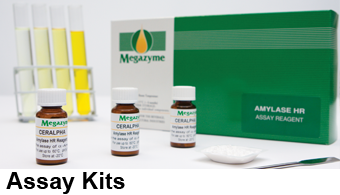
Product: Primary Amino Nitrogen Kit
Supplier: Megazyme
Code: K-PANOPA
Application: Wine/Beverage testing
Description:
The Primary Amino Nitrogen (PANOPA) Assay Kit is suitable for the measurement and analysis of primary amino nitrogen in grape juice/must and wine.
The addition of nutrient supplements to grape juice prior to/during fermentation can now be managed accurately in terms of Yeast Available Nitrogen (YAN). YAN is especially important to determine accurately, as too little available nitrogen can result in sluggish or “stuck” fermentation and the generation of hydrogen sulphide (H2S) gas, while too much nitrogen, such as in the form of added diammonium phosphate (DAP), can lead to the formation of the carcinogenic compound ethyl carbamate, especially where starting levels of L-arginine in the juice are high. The K-PANOPA assay is a more accurate alternative to formol titration that also measures proline, an abundant amino acid found in grape juice that does not contribute to YAN in anaerobic fermentations
Principle:
The amino nitrogen groups of free amino acids in the sample react with N-acetyl-L-cysteine and o-phthaldialdehyde to form isoindole derivatives
Amino nitrogen + N-acetyl-L-cysteine + o-phthaldialdehye → isoindole derivative
The amount of isoindole derivative formed in this reaction is stoichiometric with the amount of free amino nitrogen. It is the isoindole derivative that is measured by the increase in absorbance at 340 nm.
The Primary Amino Acid assay kit is a product of Megazyme Ireland International. Please contact us directly for information and shipping this product in New Zealand.
16th June 2015
Food Tech Solutions is proud to announce that we are a gold sponsor for the 2015 annual New Zealand Institute of Food Science and Technology's conference! Held from the 30th June - 2nd July we will have a booth showcasing our dynamic product range and be giving demonstrations and answering questions on all our latest products. Come find us at the Palmerston North Convention Centre and start a conversation as to how we can solve your specialist food technology needs.
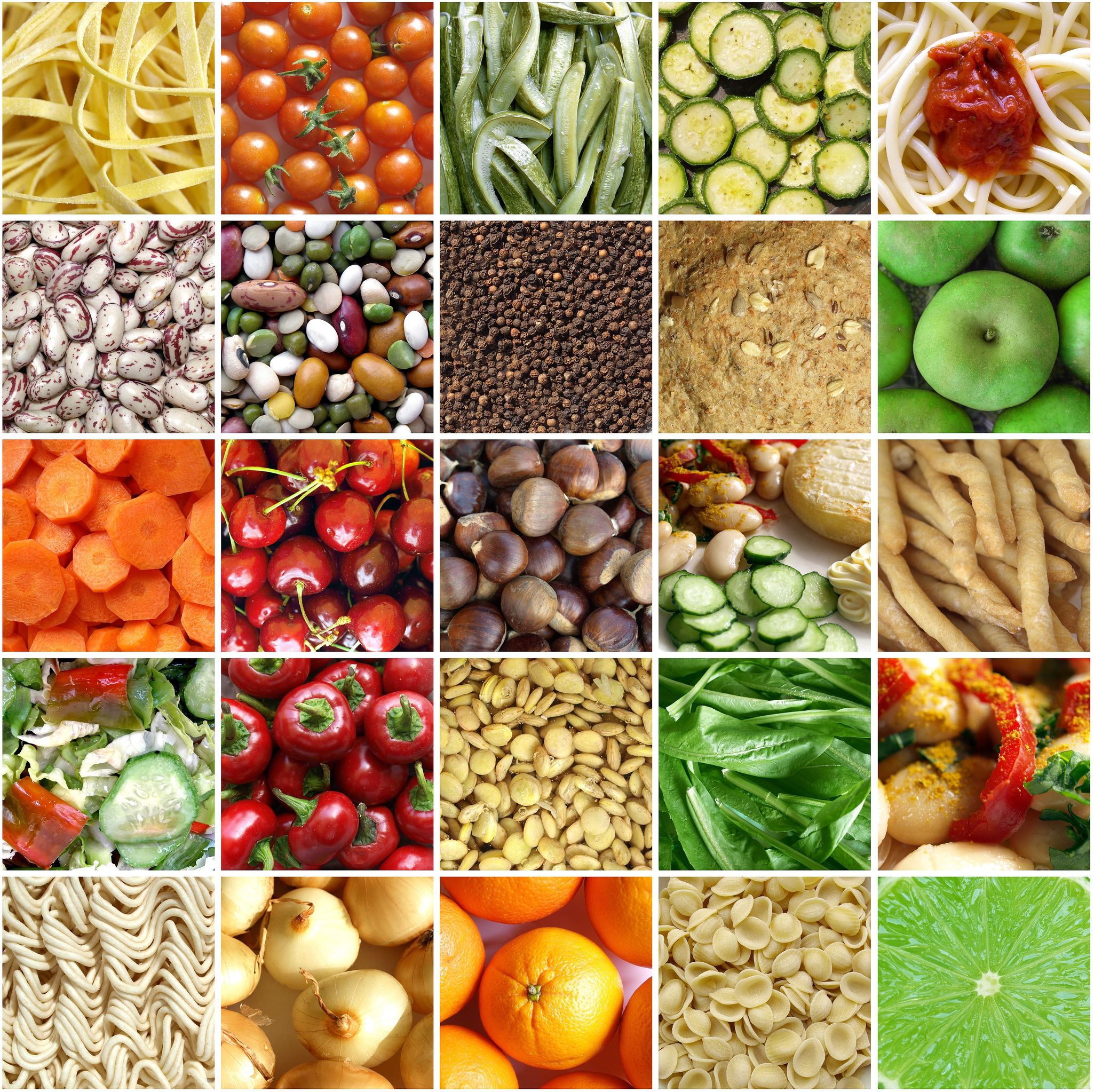
1st My 2015
PRODUCT SPOTLIGHT 
Product: Malic Acid Assay Kit
Supplier: Megazyme
Code: K-LMAL
Application: Wine/Beverage testing
Description:
As a component of the citric acid cycle, L-malic acid (L-malate) is found in all living organisms. Its quantitative determination is especially important in the manufacture of wine, beer, bread, fruit and vegetable products, as well as in cosmetics and pharmaceuticals. It is one of the most important fruit acids, and has the highest concentration of all acids in wine. In the wine industry, the level of L-malic acid is monitored, along with L-lactic acid, during malolactic fermentation. L-Malic acid finds many applications as a food preservative (E296) and flavour enhancing compound, such as in the manufacture of low calorie drinks
Principle:
The detection of L-malic acid requires two enzyme reactions. In the first reaction catalysed by L-malate dehydrogenase (L-MDH), L-malic acid is oxidised to oxaloacetate by nicotinamide-adenine dinucleotide. However, since the equilibrium of reaction lies firmly in the favour of L-malic acid and NAD+, a further reaction is required to “trap” the NADH product, and this is achieved by the conversion of oxaloacetate to L-aspartate and 2-oxoglutarate, in the presence of a large excess of L-glutamate, by glutamate-oxaloacetate transaminase (GOT). The amount of NADH formed in the above coupled reaction is stoichiometric with the amount of L-malic acid. It is the NADH which is measured by the increase in absorbance at 340 nm.
So see this product listing please click here. The Malic Acid assay kit is a product of Megazyme Ireland International. Please contact us directly for information and shipping this product in New Zealand.
1st April 2015
MEGAZYME PRICE LIST 2015
Due to the strenghtening New Zealand dollar and the changing Euro, Food Tech Solutions have reviewed their price lists effective April 2015 of Megazyme products. This will be good news for Megazyme customers in New Zealand, with an overall reduced price on their kits compared to the previous year.
You can view the new price list for 2015 on Food Tech's standard product ranges here.
To contact us about pricing information on Megazyme's other products you can contact us here or directly by emailing sales@foodtechsolutions.co.nz
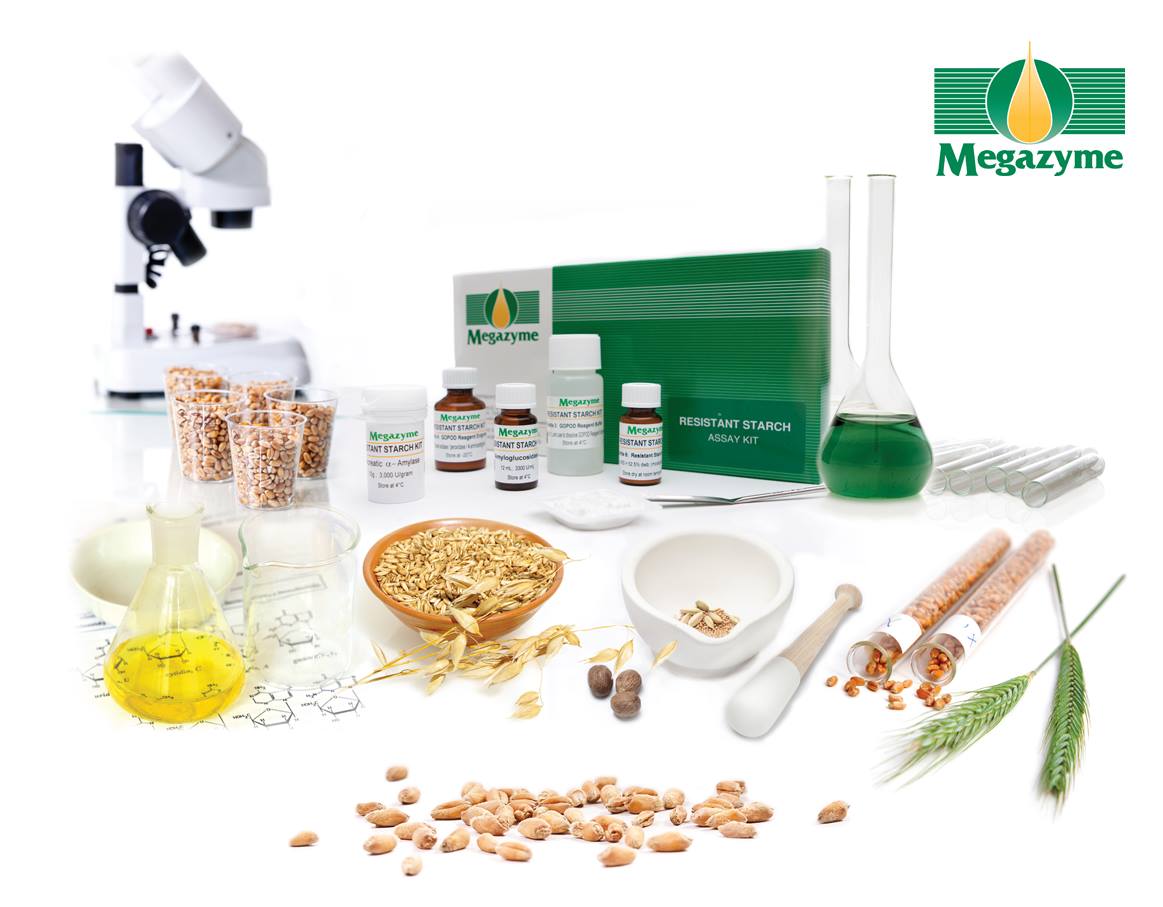
23rd Feb 2015
This coming month, Food Tech Solutions will be hosting a set of nation-wide lectures presented by Dr. Barry McCleary, CEO and founder ofMegazyme International Ireland. Open entry with an opportunity to meet Barry at the end of the lecutre and discuss how Megazyme'swide product range can benefit your research. Follow the link below to find lecture dates, times and locations.
The lecture topics will be:
- "Developments in methodology for the measurement of total dietary fibre". (will discuss updates of AOAC Method 2009.01 – Codex Type I Method).
- "Enzymic hydrolysis of polysaccharides to produce specific oligosaccharide substrates for measurement of enzyme activity"
(Will discuss work on enzymic hydrolysis of arabinoxylan, pullulan, beta-glucan and cellulose).
http://www.fts.co.nz/image/data/PDF/Lecture series flier2.pdf
18th Feb 201
Look out for Food Tech Solutions stand at the IJFST (International Journal of Food Science and Technology) conference held in Lincoln. We will have product catalogues and various bits of information regarding are product range, as well as information on how to contact us. Scientists and reseachers in food science and technology will be convening at Lincoln to discuss the latest research and developments in food processcing, safetly and global standards.
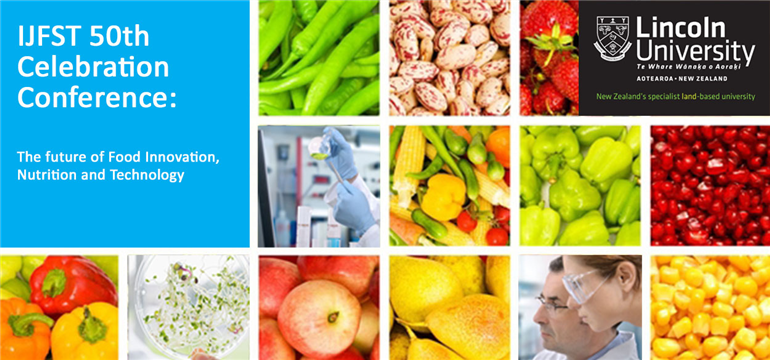

.JPG)